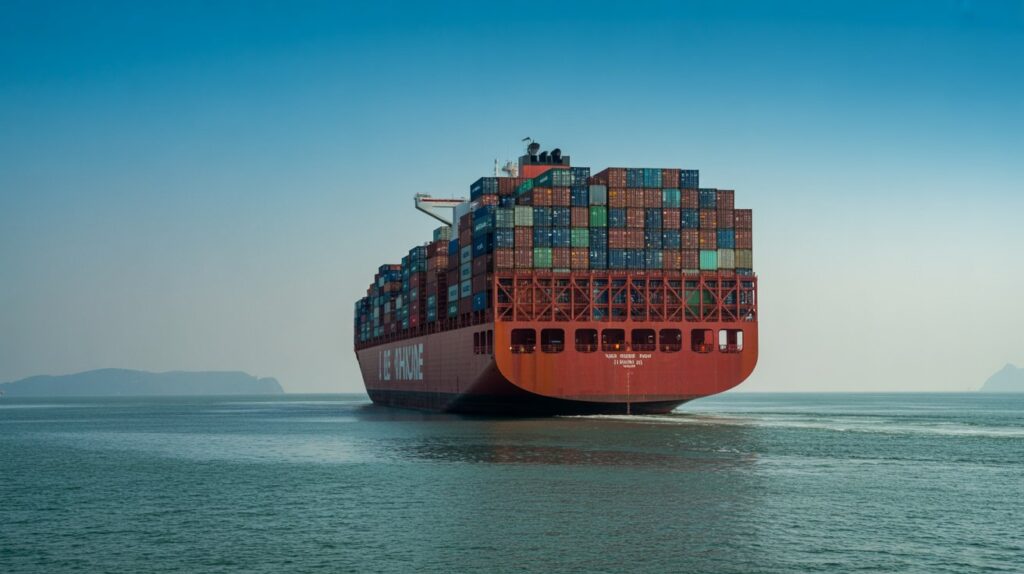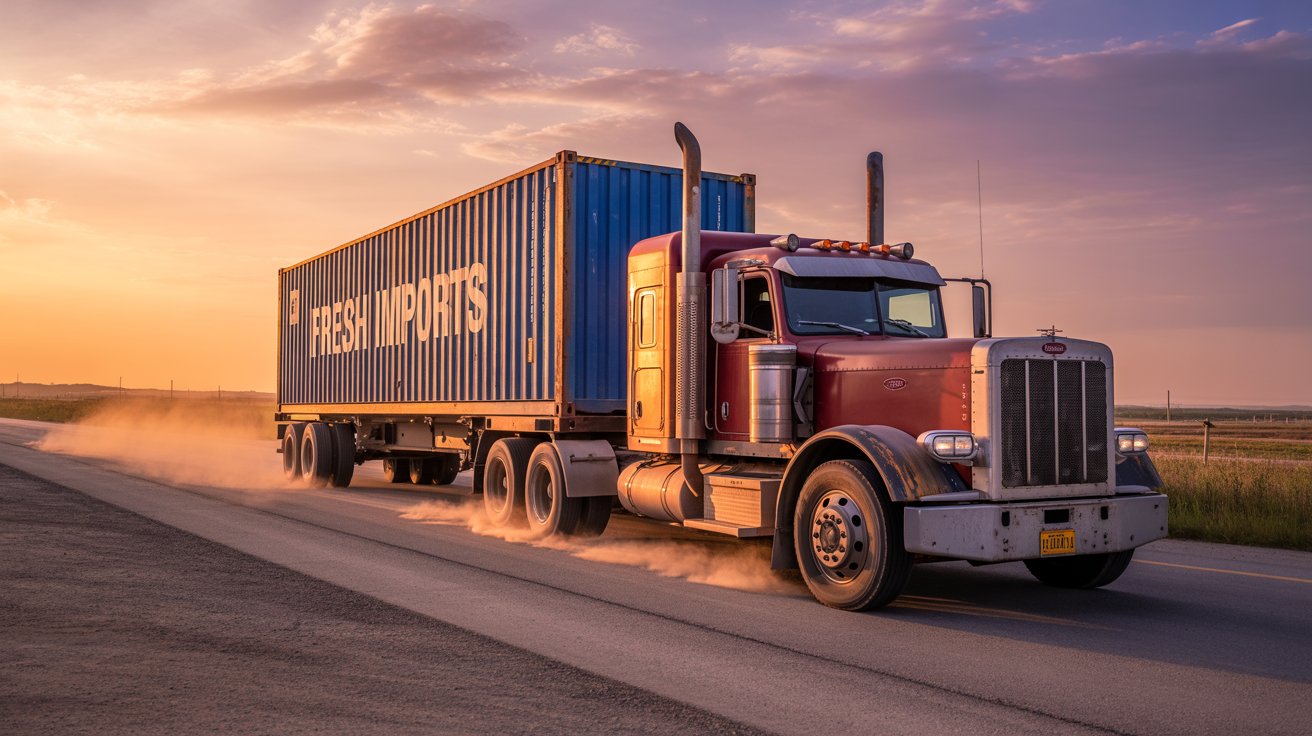Have you ever wondered how something as large and bulky as a shipping container gets from one place to another? Shipping containers are the lifeblood of global trade, responsible for transporting goods across continents and oceans. Yet, their journey from port to final destination is a complex and fascinating process. If you’re curious about the methods involved in moving these colossal metal boxes, you’re certainly not alone.
Understanding Shipping Containers
Before diving into the methods, it helps to understand what shipping containers are and why they are so vital. A standard shipping container is a large, reusable steel box used for transporting goods over long distances. They come in various sizes, but the most common ones are the 20-foot and 40-foot containers. Their design allows them to be stacked on ships, trains, and trucks, facilitating smooth and efficient transport across multiple modes of transport.
Types of Shipping Containers
While containers are essential for shipping, not all containers are created equal. Here’s a quick look at some of the most common types:
| Type | Description |
|---|---|
| Dry Storage | The standard container, used for most goods. |
| Refrigerated | Containers that maintain a controlled temperature for perishable items. |
| Open Top | These lack a solid roof, allowing for taller cargo. |
| Flat Rack | Perfect for oversized items. They have collapsible sides. |
| Tank | Used for transporting liquid or gas products. |
Knowing the type of container you need helps in choosing the appropriate transport method.
Methods of Transporting Shipping Containers
The transportation of shipping containers involves multiple methods, each suited to different terrains and distances. Since a container may need to travel thousands of miles, it often requires more than one mode of transport. Here are the primary methods:
Sea Transport
Shipping by sea is the most common method, particularly for international trade. Massive cargo ships are designed to carry thousands of containers at once, making it a cost-effective option for long-distance shipping.
Advantages of Sea Transport:
- Capacity: Ships can carry a larger volume of goods compared to other modes.
- Cost-Effective: Sea transport tends to be cheaper than air and even sometimes land transport for bulk goods.
- Global Reach: Accessible to most countries with a coastline.
Disadvantages:
- Speed: Generally slower than air transport.
- Weather Dependency: Subject to weather conditions, which can cause delays.
Rail Transport
Containers often continue their journey via railway, especially in countries with an extensive rail network. Trains are efficient for moving across vast land distances.
Advantages of Rail Transport:
- Environmental Impact: Rail transport is more energy-efficient and has a lower carbon footprint.
- Capacity: Can carry a large number of containers simultaneously.
Disadvantages:
- Accessibility: Not available in all regions due to lack of infrastructure.
- Flexibility: Fixed routes and schedules can limit flexibility.
Road Transport
Trucks are a critical component of the container transport process. They are typically used for short to medium distances or to take containers from ports to their final destination.
Advantages of Road Transport:
- Flexibility: Can reach remote areas not served by rail or sea.
- Speed: Quicker for shorter distances.
Disadvantages:
- Capacity: Limited by the size of the truck and regulations.
- Traffic and Weather: Subject to delays from traffic and adverse weather conditions.
Air Transport
Though less common due to cost, air transport is an option for shipping containers when speed is a priority.
Advantages of Air Transport:
- Speed: Fastest method of shipping.
- Reliability: Less subject to delays from weather compared to sea transport.
Disadvantages:
- Cost: Most expensive option.
- Capacity: Limited by the size and weight restrictions of aircraft.
The Role of Logistics in Container Transport
Transporting a shipping container efficiently is as much about logistics as it is about the vehicles involved. Efficient logistics networks ensure that containers are moved with the least amount of delay and cost.
Planning and Coordination
A crucial part of logistics is planning. This involves everything from choosing the right type of container to determining the most time and cost-effective route. Coordinators must factor in customs regulations, handling requirements, and any potential obstacles.
Intermodal Transportation
Intermodal transport refers to the use of more than one mode of transport to move a container. The transition between modes is seamless and minimizes handling, which reduces the risk of damage and loss.
Benefits of Intermodal Transport:
- Efficiency: Reduces handling and transfers times.
- Economic: More cost-effective over long distances.
- Reliability: Better scheduling and on-time delivery.
Technology in Logistics
Technology plays a significant role in modern logistics, with sophisticated tracking and management systems allowing for real-time tracking of containers. These systems ensure you always know where your shipment is and help in planning for any potential delays.
Regulatory Considerations in Container Transport
Each mode of transport comes with its own set of regulations that must be followed to ensure safety, security, and environmental protection.
International Regulations
When shipping containers cross international borders, they must comply with various international regulations. These may include:
- International Maritime Organization (IMO): Sets safety and environmental standards for sea transport.
- International Air Transport Association (IATA): Regulates air cargo safety.
- Customs Regulations: Governing the entry and exit of goods across borders.
Domestic Laws
In addition to international guidelines, domestic laws can impact how containers are transported. This might include:
- Road Weight Limits: Some roads have limits on the weight and size of vehicles.
- Safety Standards: Ensuring trucks and trains adhere to safety regulations for transporting hazardous materials.
- Environmental Considerations: National regulations to minimize carbon emissions.

Challenges in Shipping Container Transport
While moving shipping containers is a routine process, it’s not without its challenges. Understanding these can help in planning more effectively.
Port Congestion
One of the most significant challenges is congestion at ports, which can delay the loading and unloading of containers. Effective port management and scheduling can mitigate this issue.
Security Concerns
Shipping containers are valuable targets for theft and smuggling. Robust security measures, including tracking and seal checks, are essential at every stage.
Environmental Impact
From fuel emissions to the environmental impact of building and maintaining infrastructure, the transport industry contributes to environmental challenges. Investments in greener technologies and more efficient logistics can help address these concerns.
Future Trends in Container Transport
The future of shipping container transport is evolving with new technologies and practices aimed at enhancing efficiency and sustainability.
Autonomous Transport
Self-driving trucks and automated port operations are already in testing phases. These technologies promise to reduce labor costs and increase efficiency.
Green Shipping
There’s a growing push toward more sustainable shipping practices. This includes investments in low-emission ships and trucks and more efficient routing to minimize environmental impact.
Digital Innovations
Blockchain technology and IoT sensors offer new ways to track shipments more accurately and securely. These innovations aim to reduce paperwork and improve the transparency of the container journey.
Conclusion
Transporting a shipping container involves far more than just picking it up and moving it from point A to point B. It requires an intricate dance of logistics, regulations, and multiple transport modes coming together to ensure goods travel smoothly across the globe. By understanding the essential methods and the challenges faced, you become more informed about one of the most critical components of global trade. Whether you’re involved in the logistics industry or just a curious observer, knowing how these containers get from one port to another opens your eyes to the marvel of modern transportation.

